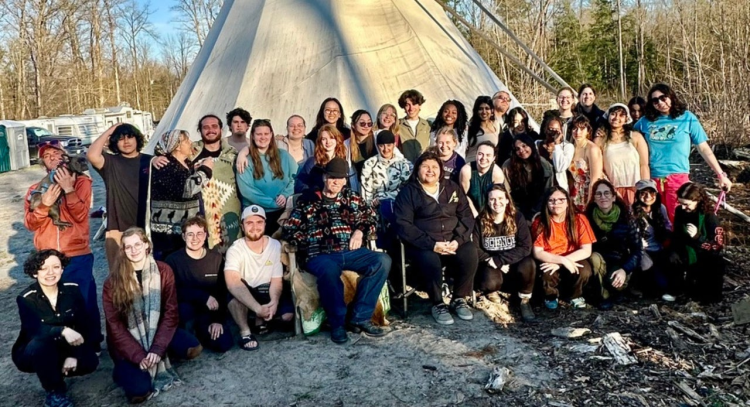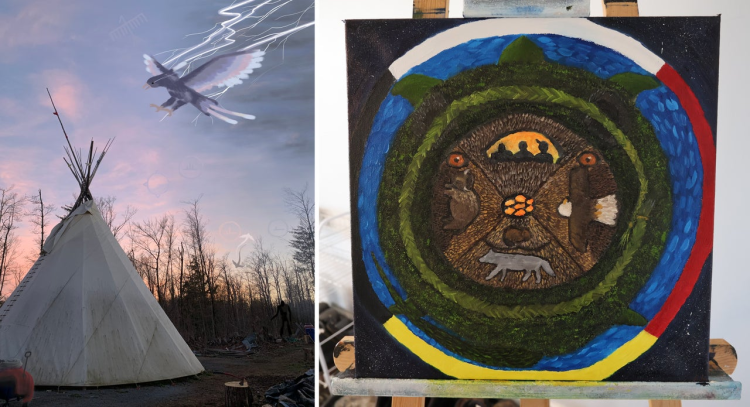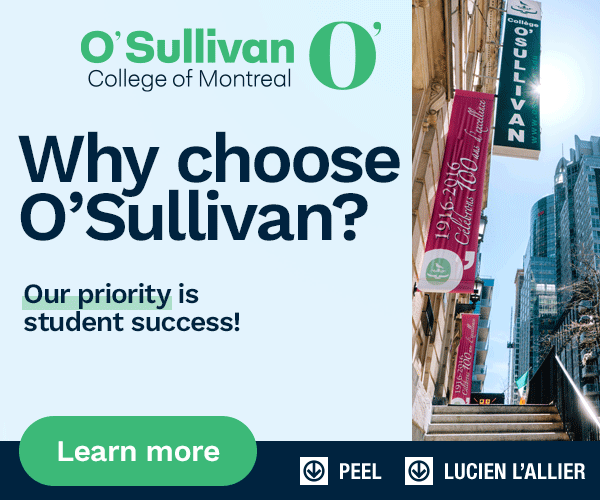In Havelock, Ontario near Alderville First Nation Reserve, Indigenous Elders and instructors welcomed 25 Faculty of Science students for a four-day Traditional Medicines Land-Based Field Course. This immersive experience offered students a unique opportunity to engage with Indigenous knowledge systems, deepening their understanding of science through land-based learning, oral traditions, and cultural teachings.
Led by Anishinaabe Elders Mark and Wendy Philips and supported by five facilitators, the course is the first at the University of Waterloo to be fully Indigenous-taught and coordinated. It is a step forward in advancing the Faculty of Science's Strategic Plan and the University of Waterloo's Indigenous Strategic Plan by promoting Indigenous experiences and strengthening commitments to inclusion and reconciliation.

The idea for the course derived from Savannah Sloat, Manager of Science Indigenous Initiatives, and Dr. Laura Deakin, Associate Dean of Science (Teaching and Learning) as they looked for ways to weave Indigenous science into the curriculum.
"Indigenous science is rooted in understanding our relationship with the land," says Sloat. "We felt the most impactful way to explore that was by taking students to a First Nation Territory, where they could learn directly from Elders. We aimed to immerse them in traditional knowledge and create space for meaningful connections."
Each day of the course was grounded in a unique theme designed to deepen students' understanding of Indigenous ways of knowing. The first day emphasized relationship-building and learning protocols tied to land and territory. On day two, students strengthened their connection to the land by working together to construct a traditional tipi using a series of 40-foot poles totalling around 300 lbs. Elders also shared intergenerational knowledge about plant-based medicines and their significance in Indigenous science. Day three focused on traditional healing, as students gathered plants from the land to create medicine boxes while engaging in discussions about the practice of Indigenous medicine.
The course concluded with a sacred healing ceremony inside a traditional sweat lodge, where students took part in a gratitude sweat. The ceremony centred on giving thanks to one another, the community, and oneself, offering a powerful moment of reflection and connection.
"It's a great honour to participate in a sweat lodge," says Sloat. "Because of the impacts of colonization, few people today can facilitate these ceremonies, making this experience especially meaningful for our students."

Artwork submitted by Science students Reine Deng and Ethan Gardner.
At the end of the course, students could submit either a traditional field report or a creative project, with many choosing the creative route. Their submissions included oil paintings, podcasts, journal reflections, and visual essays, offering thoughtful and personal reflections on their learning in formats that resonated with them.
"Students told us this experience expanded their perspective," says Sloat. "Engaging with different ways of knowing equips them to approach their work with greater thoughtfulness, cultural awareness, and respect for diversity."
The Faculty of Science plans to explore future offerings of this course as part of its dedication to transform science education by weaving Indigenous and Western scientific teachings into the classroom. By teaching through diverse perspectives, the faculty is preparing the next generation of scientists to utilize an inclusive approach to research and scientific discovery.












